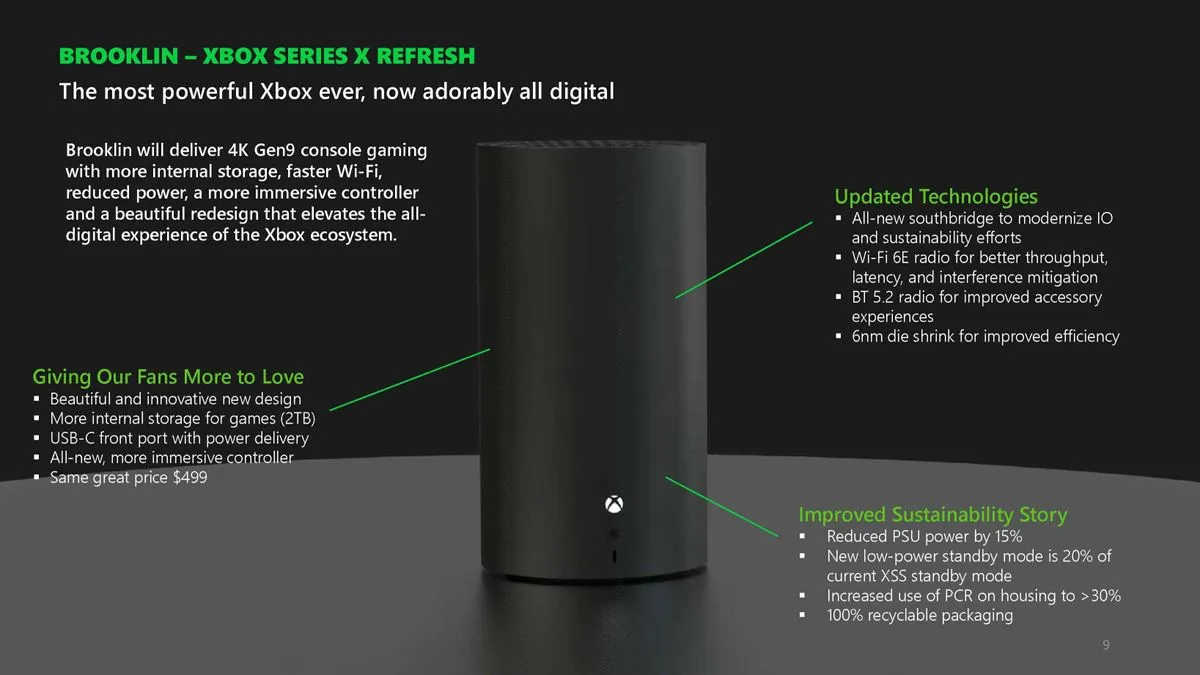
Advertisement
The recent FTC v. Microsoft lawsuit has provided intriguing insights into the future of Xbox consoles, offering a glimpse into what the next generation may entail. Despite the relatively recent release of the Xbox Series X|S and PlayStation 5, plans for the next iteration of Xbox are already underway, with a potential release window eyed for 2028.
According to leaked documents from the trial, Microsoft is currently working on two mid-gen updates for the Xbox Series X and Series S, codenamed “Brooklin” and “Ellewood,” respectively. These updates are expected to launch later this year, offering enhanced features while maintaining the current console’s performance level. Brooklin, the successor to Xbox Series X, boasts a sleek cylindrical design with 2TB of storage and various improvements, including a new southbridge and Wi-Fi 6E radio. Ellewood, on the other hand, enhances the Xbox Series S with a significant upgrade to its storage capacity, featuring a 1TB SSD to address previous criticisms about limited storage space.
Both consoles will feature a USB-C port on the front, signaling a move towards modern connectivity standards. Additionally, Microsoft is introducing a new Xbox controller codenamed “Sebile,” promising better build quality and several improvements, including haptic feedback, VCA haptic speakers, and a potential rechargeable battery option.
The pricing for these updated consoles has been revealed, with the 2TB Brooklin priced at $499 and the 1TB Ellewood priced at $299. Both consoles are set to launch with the new Sebile controller included, with the option to purchase it separately. Ellewood is expected to hit the market in September 2024, followed by Brooklin in November of the same year.
Looking further ahead, Microsoft envisions the next generation of Xbox consoles to embrace a hybrid approach, combining cloud computing with internal hardware capabilities to deliver enhanced gaming experiences. Referred to as “cloud hybrid games,” these future consoles are expected to feature Zen 6 CPUs and Navi 5 GPU chips, along with cutting-edge graphics innovations such as dynamic global illumination and ML-based super-resolution. Additionally, Microsoft is exploring the possibility of a $99 handheld device that leverages cloud gaming capabilities.
While details about these next-gen consoles are still emerging, Microsoft aims to deliver the largest technical leap in gaming console history, promising a transformative experience for both players and creators. With plans underway for a potential release in 2028, the future of Xbox gaming appears poised for unprecedented advancements and immersive gaming experiences.
